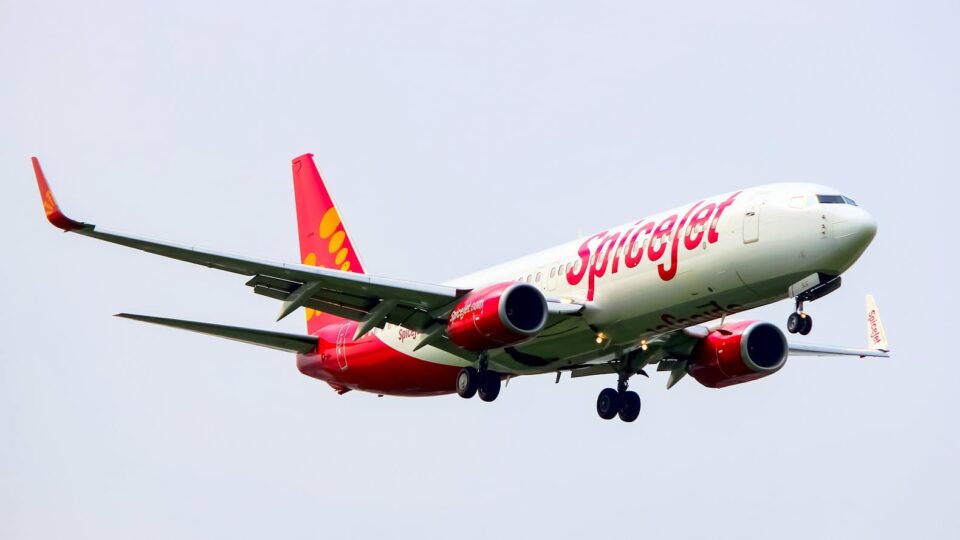Airlines
SpiceJet proud to be the only scheduled Indian airline to be audited by ICAO

According to a press release, Spice Jet officially announced on December 5 that it had passed the ICAO safety assessment and was the first airline to do so. However, there is a new twist that involves its claims. Other airlines have also been audited because ICAO has not yet clarified the audit report. The Spice Jet’s claim has not yet been identified.
Spice Jet statement: It is proud to be the only scheduled Indian airline to be audited by ICAO
The International Civil Aviation Organization’s thorough examination of SpiceJet’s operations, safety procedures, and systems revealed that everything was in working order (ICAO). The comprehensive ICAO assessment firmly establishes SpiceJet’s credentials as a safe airline. ICAO is a specialized organization of the United Nations that works to promote the safe and orderly growth of international civil aviation globally.
SpiceJet was the only scheduled Indian airline part of the audit conducted by ICAO under the Universal Safety Oversight Audit Programme (USOAP) Continuous Monitoring Approach. The audit of SpiceJet safety systems helped India achieve its highest-ever safety ranking in the ICAO audit.
On 14 November 2022, the ICAO Auditing Committee visited the SpiceJet Head Office, from where all SpiceJet flights are controlled, and the SpiceJet flight dispatch offices at Delhi Airport. They audited and reviewed the various flight critical functions and operational areas such as flight planning, weather assessment, route planning, aircraft serviceability, operations to critical airports, pilot rostering systems, cabin safety procedures etc.
American Airlines Makes Equity Investment in Universal Hydrogen(Opens in a new browser tab)
Story twist: The ICAO has not yet provided clarification for its official statement.
According to TOI “ICAO teams perform industry inspections as part of an ICAO Coordinated Validation Mission to confirm the efficacy of the civil aviation authority’s safety oversight. This will involve stopping by various operators. Visits to these operators are not at all an audit or inspection, the ICAO emphasized in its statement.
The ICAO is undoubtedly one of the aviation bodies that is least well-known, and the SpiceJet case has demonstrated how airlines may take advantage of this to their advantage, according to the senior official. The ICAO has also been contributing to the fight against this kind of false information. For instance, the Worldwide Civil Aviation Organization (ICAO) is careful to make it clear on its website that it is “not an international aviation regulator, just as Interpol is not an international police organization.” According to the statement, “we cannot arbitrarily close or restrict a nation’s airspace, discontinue travel options, or criticize airports or airlines for subpar customer service or safety records.” It explicitly states on its website that it never checks airlines.
According to the most recent ICAO release, “from November 9 to November 16, 2022, ICAO’s Universal Safety Oversight Audit Programme (USOAP) team conducted an ICAO Coordinated Validation Mission (ICVM) to India. An ICVM’s goal is to confirm advancements made in addressing the results of earlier USOAP initiatives.

Airlines
Air India’s last VVIP Boeing 747 now found a new home in USA

In a symbolic transition marking the end of a storied chapter in aviation history, Air India bid farewell to its last remaining Boeing 747-400 jumbo jetliners, once revered for ferrying dignitaries including prime ministers, presidents, and vice presidents.
The sale of these iconic aircraft to AerSale, a company based in the United States, signals the closure of a remarkable era for the airline.
The decision to part ways with the Boeing 747s was driven by practical considerations. Tata Group, the new custodian of airindia flights, deemed these majestic planes uneconomical to operate in today’s aviation landscape. As such, out of the four sold, two will be repurposed into freighters, while the remaining pair will be meticulously disassembled to harness their valuable parts.
The transaction, orchestrated by Mumbai-based Vman Aviation Services, underscores the strategic shift in Air India’s fleet management strategy under its new ownership. Tata Group’s decision to divest from the 747s reflects a commitment to optimizing operational efficiency and aligning with contemporary industry standards.
Skytech-AIC, a UK-based remarketing firm engaged by Tata Group, facilitated the sale of these iconic aircraft, marking the conclusion of their illustrious service with Air India. The airline’s last flight featuring the Boeing 747 took to the skies between Delhi and Mumbai in March 2021, encapsulating decades of distinguished service and indelible memories.
The allure of used aircraft parts continues to resonate across the aviation sector, offering operators a cost-effective alternative without compromising on quality or performance. The transfer of these aircraft to AerSale not only ensures their continued utility but also underscores the enduring legacy of Air India’s fleet.
Airlines
A software error caused grounding the entire airline fleet

On Wednesday, the U.S. Federal Aviation Administration (FAA) issued a ground stop advisory for all Alaska Airlines and subcarrier flights due to a software issue, disrupting travel plans for passengers.
The FAA directive, which prohibited the departure of Alaska Airlines mainline and subcarrier flights, was implemented as a precautionary measure following the detection of the software problem. The ground stop was initiated after Alaska Airlines encountered difficulties during a system upgrade related to the calculation of weight and balance for their flights.
As a result, the airline opted for a temporary suspension of all its operations to address the issue and ensure passenger safety. Alaska Airlines promptly issued a statement acknowledging the incident and expressing their commitment to resolving the matter swiftly. “This morning we experienced an issue while performing an upgrade to the system that calculates our weight and balance.
Out of an abundance of caution, we requested a ground stop for all Alaska and Horizon flights, which was instituted at approximately 7:30 a.m. PT,” the statement read. Passengers affected by the disruption voiced their concerns on social media platforms, prompting Alaska Airlines to reassure them of their efforts to minimize the inconvenience and expedite the resumption of flights.
Following approximately an hour-long interruption, the FAA lifted the ground stop order, allowing Alaska Airlines and its subcarriers to resume normal operations. However, it was clarified that SkyWest, which provides regional service for Alaska Airlines and other carriers, was exempt from the ground stop and continued its flights unaffected.
Aerospace
Which is bigger 777x or 787 aircraft ?

The 777X is a new series of the Boeing 777 family and is designed to be larger and more efficient than its predecessor. It features two variants: the 777-8 and the 777-9, being the larger of the two.
The Boeing 777X emerges as the larger sibling within the Boeing family, representing a significant leap forward in both size and efficiency. Comprising two variants, the 777-8 and the 777-9, the latter takes the crown as the larger of the two. With its expansive fuselage and impressive wingspan, the 777X is tailored for long-range journeys and boasts a substantial passenger capacity.
On the other hand, the Boeing 787, affectionately known as the Dreamliner, occupies a niche in the market as a smaller yet formidable aircraft designed for medium to long-range flights. Its distinguishing feature lies in its composite fuselage, a technological marvel that renders it lighter and more fuel-efficient compared to conventional aluminum counterparts. The Boeing 777X is larger than the Boeing 787 aircraft.
When it comes to passenger capacity, the 777-9 reigns supreme, typically accommodating a sizeable contingent of 400-425 passengers in its standard configuration. In contrast, the 787, with its more modest dimensions, typically carries between 240-290 passengers, depending on the variant and layout.
One of the remarkable innovations introduced with the 777X is its folding wingtips, a feature designed to address the logistical challenges of accommodating such a large aircraft in conventional airport gates. These folding wingtips enable the 777X to retract its wings, allowing it to fit into gates designed for smaller aircraft while still reaping the benefits of an extended wingspan during flight, thereby enhancing fuel efficiency and operational flexibility



























